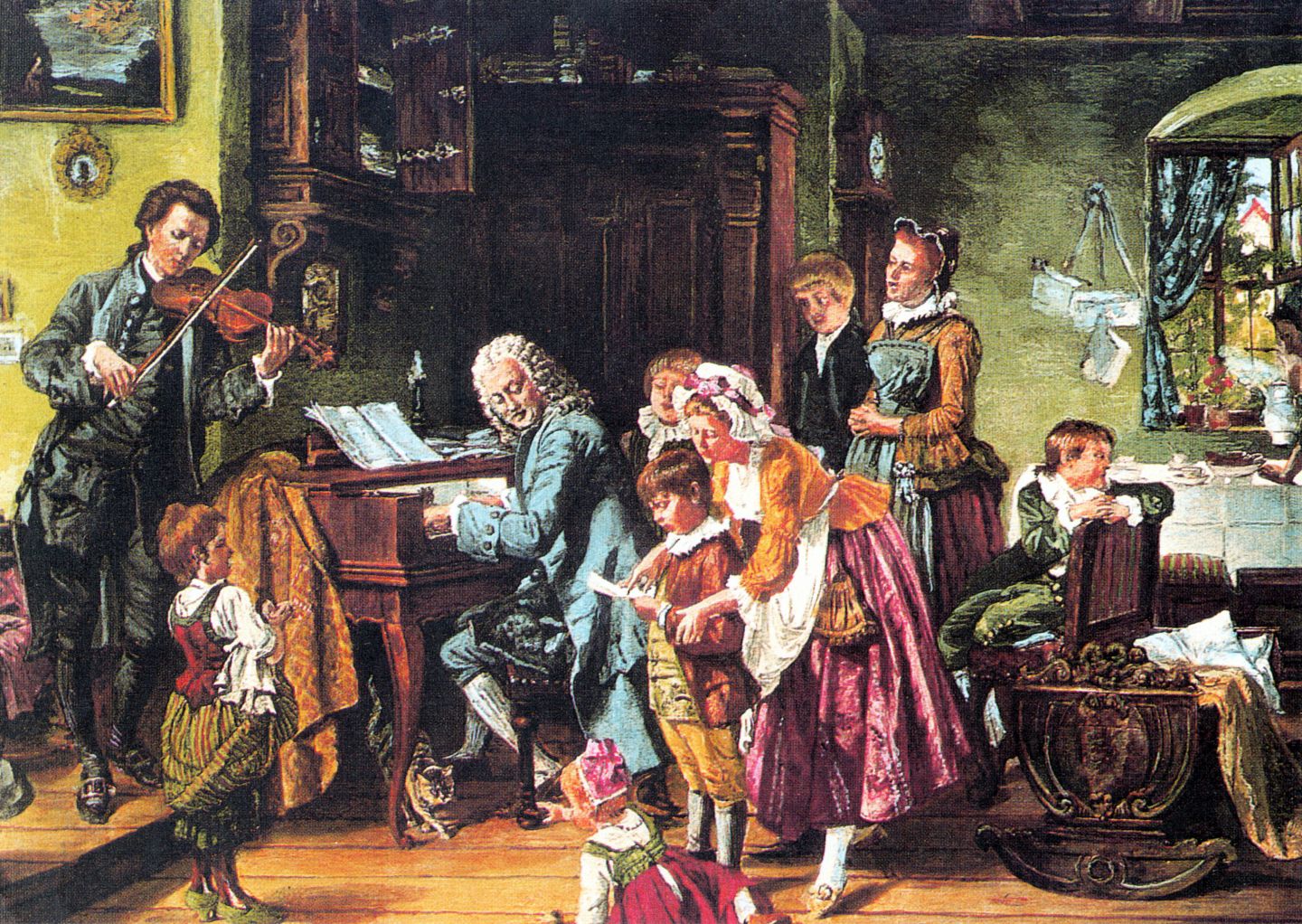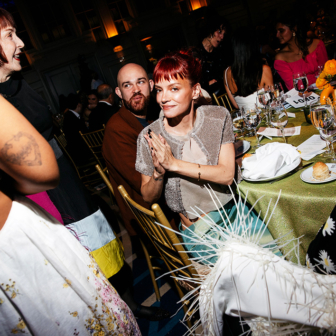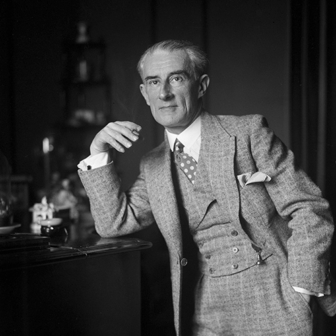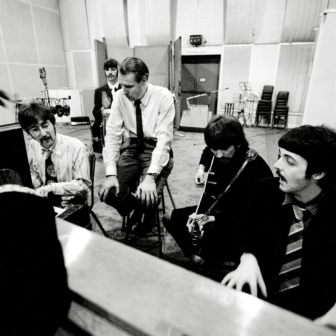Like Dickens, Bach goes with Christmas; without his music, something would be missing. But there is a difference between the nineteenth-century novelist and the eighteenth-century composer. From The Pickwick Papers to The Mystery of Edwin Drood, Christmas for Dickens was an occasion for sentimentality. Bach is never sentimental.
When we listen to the opening of the Christmas Oratorio we hear joy, certainly, and of course it’s Christian joy, the trumpets and drums and trilling flutes heralding and celebrating the birth of Jesus. But we also hear the physical and intellectual joy of musical invention, and for Bach all these things went hand in glove. No one created more musical joy than Bach, not even his contemporary and compatriot, Handel. By the same token, no one handled its opposite, grief, so sublimely, and no one offered better consolation. In Bach, we find a composer perfectly balancing the mind and the body.
It is not universally true, but great artists tend to be prolific, unstoppable, and Bach’s output is huge. To call Deutsche Grammophon’s Bach 333 edition (just released, 333 years after the composer’s birth) a “boxed set” is accurate but misleading, for it is a boxed set like no other. The size and weight of a case of wine, it contains 222 CDs sourced from twenty-two different record labels, two large-format hardback books and seven thick paperback booklets containing, among other things, the texts of the vocal and choral works that dominate this composer’s work. I haven’t yet worked out where to put it. But that somehow seems appropriate, for great art is not made for our convenience.
Bach was born in 1685 into a family of musicians in Eisenach in the central German province of Thuringia. His father, Johann Ambrosius Bach, ran the town band. Ambrosius’s father and grandfather had also been musicians, and so were his brother and cousin, both of them, as it happens, called Johann Christoph. It was Christoph the cousin who had the most talent, and he taught the young Johann Sebastian the organ. Johann Sebastian himself would be married twice, fathering twenty children, half of whom survived into adulthood. All of them seem to have been musical, though we don’t know much about the daughters, and three of his sons themselves became distinguished composers. Quite the dynasty.
Eisenach had solid Lutheran associations. Martin Luther’s mother had been born in the town and Luther himself spent some of his childhood there, returning in 1521 with a price on his head to take up residence in the Wartburg Castle, where, under the protection of Frederick the Wise, elector of Saxony, he translated the New Testament into German. We should count ourselves lucky the Bach family was Lutheran. Had Johann Sebastian been born a Calvinist we might never have heard of him.
In contrast to Calvin’s musical strictures, Luther considered music an essential part of Protestant worship and, in itself, something like a moral good. “Those who have mastered the musical art are made of good stuff,” he wrote, “and are fit for any task. It is necessary for music to be taught in schools. A teacher must be able to sing, or I will not even look at him.”
Writing a two-part study of Bach and Beethoven, the late musicologist Wilfrid Mellers called his first volume Bach and the Dance of God (the second was Beethoven and the Voice of God). He was correct to stress the dance. Most obviously in the instrumental music — the partitas for solo violin, the English and French suites for harpsichord, the solo cello suites — dance metres and rhythms are everywhere. These suites comprise allemandes and courantes, minuets and gavottes, sarabandes, bourées and gigues. They were the fashionable dances of the time, danced at court and emulated beyond, but in most cases their origins lay a century or two earlier with the peasantry. Did Bach know this? In including these dance forms in his work, did he reason that he was not merely addressing an audience of nobles but embracing the experience of all classes? It would certainly have fitted with his Lutheran beliefs: the Bible and liturgy in the vernacular, the congregation singing popular hymns.
For it was not only in his instrumental music that Bach employed dance metres. The two hundred religious cantatas he composed, first in Weimar and then later Leipzig, contain movements founded on dance. And when not specifically related to dance, baroque music in general had a steady pulse running through it. If Bach’s mind is contemplating heaven, his feet, while stepping lightly, make regular contact with the earth.
Was he aware of that medieval conceit of the life of Jesus as a dance? In his cantatas, he was drawn over and over to the notion of Christ in dialogue with his “bride,” the Church: was music, for Bach, an emulation of the “general dance”?
In 1723, Bach was appointed cantor of St Thomas’s in Leipzig, a position he held until his death in 1750. It was a prestigious but arduous role: as “Thomaskantor” he was not only responsible for providing the music each Sunday at four churches, but also for teaching the boys in the adjoining St Thomas’s School. Adjoining his apartment that is — you wonder how he composed at all! Yet in his first six years in the post he composed the majority of his cantatas, often at the rate of one per week. That’s perhaps half an hour of new music composed, copied out and rehearsed, along with his other responsibilities, every seven days. It must have been a gruelling routine, but there is nothing routine about the music.
Each cantata takes as its starting point the Epistle and Gospel reading appropriate to the Sunday for which it was intended — the second Sunday after Epiphany, the third after Easter, the twenty-seventh after Trinity, and so on. The sung text is generally a theological disquisition in poetic form given to one or more solo voices, with or without chorus. So we might think of these cantatas as sung sermons, and it is remarkable the extent to which Bach was responsible for the tone of the pronouncements. For while the solo voice presents its commentary on the day’s lesson, an obbligato instrumental line typically spins a secondary, wordless commentary around it.
A feature shared by about a quarter of these cantatas is the presence of a chorale — one of those popular Lutheran hymns — generally subjected to vocal and instrumental embellishment at the beginning of the cantata, then sung straight at the end.
As a concrete example of all this, we might take the cantata Mache dich, mein Geist, bereit (Prepare Yourself, My Spirit), BWV 115, composed in Leipzig for the twenty-second Sunday after Trinity in 1724. The day’s Gospel reading was the parable of the unforgiving debtor from Matthew 18:21, and the cantata is built on a well-known hymn by Johann Burchart Freystein. The first verse is presented upfront as an elaborate structure in which sopranos sing the tune (doubled by a cornetto), while the other voices offer imitative embellishments on top of a four-part fantasy for solo flute and oboe d’amore with unison violins and violas over an energetic bass line. There follow two long and expressive arias. In the first, which has the form of a lilting siciliano — a dance in 3/8 — an alto voice, with strings and oboe d’amore obbligato, reprimands the soul for sleeping on the job; in the second, a soprano with a double obbligato of flute and piccolo cello directs the soul, softly, achingly, to pray for forgiveness and purity. Each aria is followed by explanatory recitativo passage for bass and tenor voices respectively, and the whole cantata ends with the final verse of Freystein’s hymn, simply harmonised and stripped of its earlier instrumental adornments.
The cantata is a masterpiece, but how it went over at its first performances is anyone’s guess. The arias are such concentrated spans of lyrical introspection that it is impossible to imagine them having much effect in a large church, packed to the rafters with congregants, many of them chatting, some arriving late or leaving early through the open doors, while animals wandered about untethered.
For this listener, it helps immeasurably to be able to read the texts that Bach set and understand their background. This is music driven by Bach’s faith, and directed by it — of course, it was also his job, and he was nothing if not a professional. But even without all the theology, the music can speak on its own behalf to anyone with time to devote to it and ears to hear.
So how do we sum up this man and his art? The big box currently on my coffee table seems to demand this attempt, but it’s hard. Did Bach the jobbing musician even think he was creating art? While his time in Leipzig might have been dominated by religious music, the six years before his arrival there were spent at Prince Leopold’s court in Cöthen writing instrumental music (including the cello suites) because that’s what his boss required. And staunch Lutheran though the composer was, he chased a position at the Catholic court in Dresden by offering them one of his very greatest works — the Mass in B minor.
Bach’s body of work is immense, varied and of a consistency unequalled in Western music. It’s true to say he was not an innovator in the manner of Haydn or Beethoven, or of Wagner, Debussy or Stravinsky. He didn’t alter the nature of music. Even in his lifetime, he was called a conservative, the writing of fugues considered old hat. And yet, was there ever a more influential composer?
After Bach’s death, much of his music fell into disuse. The St Matthew Passion lay unperformed for nearly a century until the twenty-year-old Mendelssohn presented it in Berlin in 1829 to an audience that included the philosopher Hegel, the poet Heine and the King of Prussia. But Bach’s keyboard works were never forgotten and were particularly prized by other composers, among them Mozart and Beethoven, who made his Vienna debut as a pianist with a program that included selections from the Well-Tempered Clavier.
Still, if Bach was no radical, he remains a touchstone. When it comes to the organ, he is the one composer who is indispensable. An organist’s work, whatever else it may involve, begins and ends with the music of Bach. In a way it is the same with the cello. There has been music for solo cello composed in the last 333 years (most of it in the last century), but nothing on the scale of Bach’s six suites. They are simply unique, and even today, a composer sitting down to write for cello alone will find him or herself in dialogue with that music.
The 222 CDs in the Deutsche Grammophon box contain 280 hours of music, not that the composer’s complete works last that long. An important aspect of Bach’s music is its aptness for interpretation and reinterpretation. While we have learnt over the last seventy years to play this music in a manner informed by history, it is not the only approach. In this box are performances of all Bach’s music that fit the “historically informed” approach, but there are also multiple recordings of many of the works, and some of these predate modern research while others simply ignore it. There are also responses to Bach — arrangements and musical commentaries — by later composers as various as Elgar and Webern, Birtwistle and Kats-Chernin (her Re-Inventions for recorder and string quartet, played by Genevieve Lacey and the Flinders Quartet). And there’s the jazz of Jacques Loussier’s Play Bach Trio and the still-sparkling scatting of the Swingle Singers. Bach is not only indispensable, but indestructible!
In the end, it is this quality of Bach’s music one cannot gainsay. The richness of the harmony, the exuberance of the counterpoint, the integrity of the notes on the page. Play them fast, slow them down, jazz them up: the strength of the composer’s invention endures and speaks to us irrespective of style.
It also seems to bypass the composer’s ego. When we listen to Beethoven’s music — remember Mellers called it “the voice of God” — we do indeed hear a voice; it’s the composer’s voice. We listen to Beethoven’s quartets or sonatas or symphonies and we sense Beethoven. It’s the same with nearly any other composer you can name, particularly after Bach.
But Bach is different. We listen to Bach’s music, however grieving, however consolatory, however joyful, and Bach himself — the man, the jobbing musician — doesn’t seem to be there. This is why there is no sentimentality. When we listen to Bach, we hear own grief, our own consolation, our own joy — our own Christmas. •





